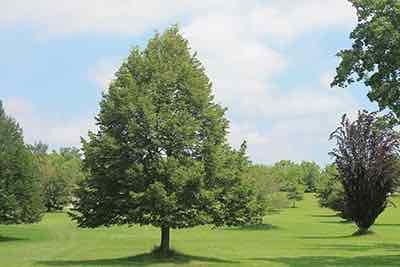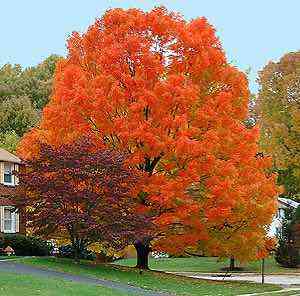Your cart is currently empty!
Light Pollution and the Importance of Darkness For Wildlife
Discover how artificial light affects migratory birds, nocturnal animals, and wildlife in your garden, and learn how to create a safe refuge with darkness.
Your cart is currently empty!
Author: Julianne Labreche, Master Gardeners of Ottawa-Carleton; published with permission
White-breasted nuthatches are sometimes called ‘upside down’ birds because of their unusual ability to perch and move upside down on trees. In any position, they can probe into bark furrows, cling to a tree, and move up and down to forage or hide food. It is a delightful little blue-grey bird, about five inches long, with a black or blue-gray cap, a white face and belly, and a rusty coloured patch near its rear. Nuthatches live in mature and mixed deciduous woods, parks, orchards, and wooded suburbs – including my own neighbourhood. In my garden, they can be seen in all seasons foraging among the old cedar trees or visiting the bird feeder. Sometimes, I see their smaller cousin too, the red-breasted nuthatch, which is about the size of a chickadee.
Nuthatches tuck nuts and seeds into the crevices of trees. They will peck or hack away, hammering with their long, straight bill until the hard exterior is broken. The name ‘nuthatch’ probably derives from an older word, ‘nuthack’.
In the summer, nuthatches eat mostly insects, including spiders. They also feed these insects to their young. In winter, by necessity, they eat more seeds. At the feeder, they are attracted to suet, peanut butter mixtures, and seeds, including sunflower, as well as mealworms.
White-breasted nuthatches usually mate for life and often take up permanent residency in their territory. Both parents feed their young. Like most wild birds, nuthatches need safe places to escape predators, to protect themselves from the elements, and to nest and rear their young. To attract nuthatches to your garden, grow a variety of native trees and plants that will provide them with year-round biodiversity. Some useful tree species include:
American basswood or linden (Tilia americana) – Basswood is a medium to large deciduous tree with large heart-shaped leaves. It grows in full sun or partial shade, in clay, loam, sand, or coarse soil. Its fragrant flowers attract insect pollinators and provide nectar for insects. Lots of insects, in turn, provide food for birds.

Sugar maple (Acer saccharum) – This large, deciduous tree will grow in full sun, partial sun or shade. Sugar maple grows in both dry and moist soil but prefers a well-drained soil such as loam, sand and coarse soil. It will also grow in clay. It provides small seeds for nuthatches in the fall.

White ash (Fraxinus americana) –This is a large deciduous tree that grows in both full sun and partial shade. It prefers well-drained soil. White ash will tolerate a variety of soil conditions, including clay, loam, sand, coarse, or organic soil. Although this tree is susceptible to the Emerald Ash Borer, it is nevertheless a beneficial tree to plant for nuthatches because of its small seeds in late fall.

To listen to the white-breasted nuthatch, check out the Cornell Lab of Ornithology at: https://www.allaboutbirds.org/guide/Whitebreasted_Nuthatch/#
Discover how artificial light affects migratory birds, nocturnal animals, and wildlife in your garden, and learn how to create a safe refuge with darkness.
Rain barrels are simply containers that capture and store rainwater for future use. Purchased or DIY, rain barrels can pay for themselves.
Discover how to manage green waste efficiently and create a thriving, eco-friendly outdoor space with sustainable gardening practices.
Milkweed is required for a Monarch Waystation. Butterflies can feed on nectar plants, and can lay their eggs on milkweed in the area.
The Ironwood makes a great backyard tree as it is resistant to many diseases and insect problems. Read the quick growing guide.
Learn how to attract black-capped chickadees to your garden by planting native trees and flowers that provide food and nesting spaces.
GardeningCalendar.ca gets some funding from advertisers. If you click on links and advertisements at no cost to you, the site may receive a small commission that helps fund its operation.
© 2025 J&S Calendars Ltd.
Leave a Reply
You must be logged in to post a comment.